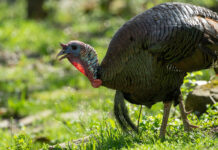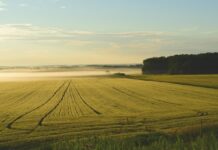Back in the early part of the 20th century gasoline and oil tractors were few and far between. The big heavy monsters that existed at the time were more likely to be found in the vast prairies of the northern plains states, where they were used for breaking the virgin sod, than in the corn belt or on small eastern farms where the fields were much smaller and horses were well entrenched.
Early on, enterprising literary types saw the need for periodicals to gather and publish information about these mysterious (to most people) machines. One of these was the Gas Review, published by Bascom B. Clarke the longtime editor of American Thresherman magazine.
In the July, 1917 issue I found the following letter from a reader.
Letter from reader
I have worked on gas tractors in Montana and North Dakota for a number of years. Naturally I have had some experiences, not all of them to my credit either. However, I’ll try to tell you a few.
We were running a 30-60 [Hart-Parr] tractor day and night one spring. I was on the day shift and was supposed to keep the engine in repair. One evening about five o’clock, “Old Maud” started to heat up something unusual.
After investigating and finding that the cooling pipe from radiator to the cylinders wasn’t hot at all, I decided a cooling pipe must be plugged up. The rounds there were two miles long but we happened to be near home when I noticed it, so we uncoupled the machinery and pulled up to the blacksmith shop, started to let the cooling oil out and found that so much oil had leaked out that it wouldn’t reach the circulating pump. I started taking the radiator apart to find the leak.
Plowing
We had drained the oil into several old wooden barrels. The last one had part of the top end still in it so we stood on it while we were taking the radiator off. We found a big hole in one section and some small ones in others and soldered them up. By this time it was dark and the night crew was working with us. Ikey, the fellow who ran the plow nights was standing on that barrel when the head gave way and down he went into that nice warm black oil. It splashed up above his waist and being warm and thin soaked in quite readily. Ikey, not being a church member, soon had the air blue and he was a sight for sore eyes. That spring we plowed and sowed about fourteen hundred acres with that one outfit.
Motorcycle
My partner and I bought a twin, single speed motorcycle when we came out here. Prescott is rather tall and long legged so he could ride the ruts that are in nearly all the roads out here but I am not so fortunate, so when I tried to ride the deep ruts—well, sometimes I was on top and going good and sometimes the motorcycle was on top of me and not going good, for me at least.
Riding the motorcycle
It took me about six hours to go thirty miles one night by moonlight. I didn’t have a light on the machine and it was soon after a rain and very slippery. I would pick up and get started nicely, when down I would go again. I made up my mind that if I got through alive I was going to fix that thing so I could ride it with my eyes shut.
I was within three miles of home when the chain broke and I was so mad and tired that I pushed it off the road, looked at it for a while and then walked home. That was in the fall and we had to make a ten mile move that same night. I didn’t get to bed until three o’clock.
No terror
Next time I got to town I got a motorcycle front wheel complete, some pieces of strap iron and a one inch pipe and made a side car. It was a standard track width and would follow any common road nicely. Ruts had no terror for me anymore.
Instead of the thirty-six tooth sprocket on the rear wheel I put on a forty-three tooth, which gave it greater pulling power but less speed.
However, it could still make thirty to forty miles easily and that was fast enough for these roads. Three men could be easily carried on it and we hauled plow lays and repair parts.
Accident
It was a cheap way of running around but we finally bought a “flivver” and one night coming home from town (no, I don’t drink) a spindle bolt came out, “und ride avay quick” I was in the ditch. It looked bad, it bent the radius rods, front frame member and a few other things but didn’t break anything. It cost two dollars and a half to get the parts straightened out again and I watch for loose bolts and nuts more than I did before. That is the most important one, the loose one.
Still going
You will see by the picture [the writer enclosed a photo of the 30-60 Hart-Parr pulling a six-bottom plow. Unfortunately, the photo is too small to reproduce] that we moved the canopy back two feet, which gives the man at the wheel more shade and protection. We find that six breakers and a packer are a nice load for that size engine in this rolling country. We can go up quite a stiff grade with that while if we were pulling eight we would have to pull out two.
The letter was signed: Bontreger and Coutelle, Cohagen, Mont.
A good account of how tractors were used in the Great Plains back in the “good old days.”












